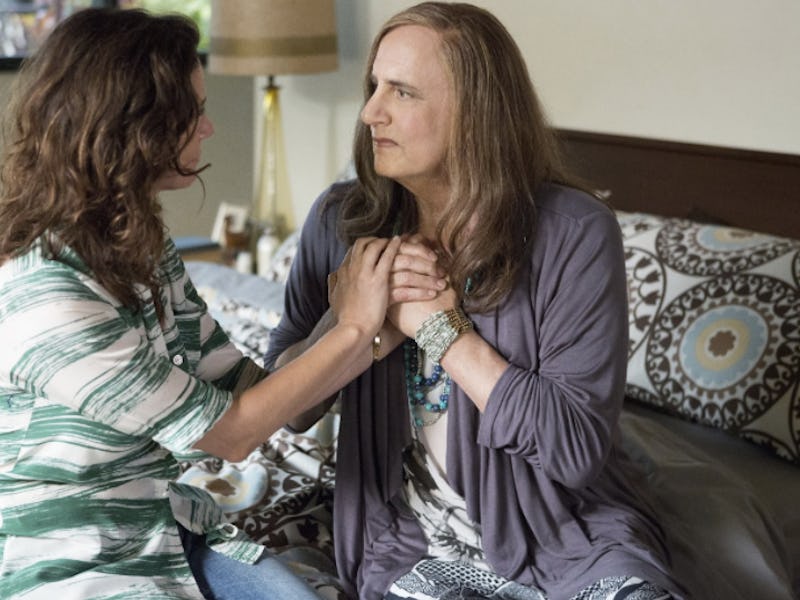High-profile series like Transparent and Orange is the New Black have been celebrated by critics for including honest and accurate portrayals of transgender people in their storylines. But it isn’t just Hollywood that’s applauding: Recently, researchers from the University of Southern California pointed out that these shows have a huge influence on changing negative public perceptions of transgender people — even more than news stories about actual transgender people.
The research, published in the journal Sex Roles, is the first to demonstrate what effect cumulative exposure to transgender characters on multiple TV shows has on the attitudes of viewers. Carried out on 488 participants, the study suggests that the best way to positively influence people’s attitudes and about transgender people and policies is through entertainment, not the news. Much as programs featuring queer characters like Ellen and Will & Grace helped decrease prejudice against queer people in the 1990s, the study suggests that shows featuring transgender people might have the same effect.
This particular study focused on the effect of an episode of the USA Network show Royal Pains that included a transgender teenager played by transgender activist Nicole Amber Maines.
Though the scenes involving Maines’ character only amounted to 11 minutes, the researchers found that they created more positive attitudes about transgender people and related policies than actual news events about transgender issues and Caitlyn Jenner’s transition. These real-life events, the researchers found, did not influence attitudes at all.
“Watching TV shows with nuanced transgender characters can break down ideological biases in a way that news stories may not,” the researchers write. “This is especially true when the stories inspire hope or when viewers can relate to the characters.”
The researchers also found that viewing two or more transgender storylines beyond Royal Pains reduced “the association between viewers political ideology and their attitudes toward transgender people by half.” The more transgender characters they watched on television, the more transgender-supportive their attitudes became.
Even conservative viewers became increasingly positive of transgender individuals. Overall, however, politically conservative people still reacted with more “disgust” to these storylines compared to politically liberal people, who were more likely to feel hopeful about the character or identify with them.
Laverne Cox as Sophia on "Orange is the New Black."
The results of this study are similar to previous papers that found queer television characters positively the influenced perception of real queer people. These portrayals in turn gathered support for LGBTQ issues: A 2012 poll conducted by The Hollywood Reporter found that 27 percent of people who are pro-gay marriage became that way because of their exposure to gay characters on television.
While there has been a steady increase of transgender characters on television, there is still work to be done. A 2015 analysis, also from the University of Southern California, found that in a sample of the 100 top films of 2015, only 32 speaking or named characters were lesbian, gay, bisexual, or transgender, and only one character within this subset was transgender.
Still, as representations of transgender people increase across pop culture, so likely will supportive attitudes about transgender people increase as well. In light of President Trump’s recent attempt to ban trans individuals from serving in the U.S. military, it seems this bit of good news couldn’t have come soon enough.
